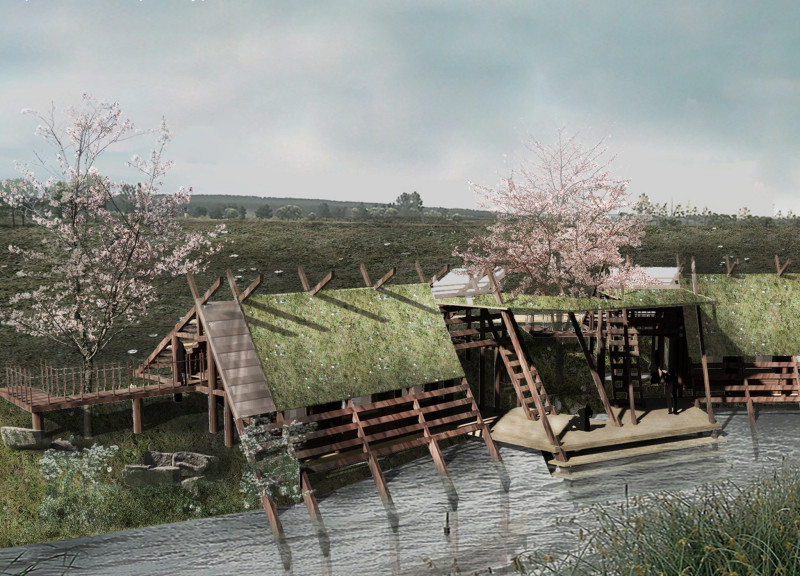5 key facts about this project
The architectural design titled “Disappeared Buildings” is located in Latvia and aims to create living spaces that closely interact with the surrounding landscape. The project is built around the concept of "hidden limitation," which means that the design integrates with nature rather than overpowering it. By focusing on sustainability, the architecture strives to preserve the environment while offering comfortable and functional spaces for residents.
Site Challenges and Analysis
The site covers an area of 23,560 m², but the available building footprint is only about 100 m². This challenge creates opportunities to incorporate thoughtful landscape design while ensuring that most of the site remains natural. The local weather conditions are also important, particularly the wind direction, which affects how outdoor spaces, such as those for barbecues, are arranged. By taking these factors into account, the design promotes enjoyable outdoor experiences throughout the year.
Architectural Style and Functionality
The building features a narrow base that runs east to west, which adds complexity to the planning of roads and surrounding landscape. Two entrances at different levels improve access and encourage movement through the space. A mix of horizontal and vertical designs creates distinct functional areas while maintaining overall connectivity. Local traditions influence the architecture, evident in the design of a sauna that promotes traditional customs, such as jumping into water, enhancing the connections to local culture.
Landscape Integration and Sustainable Practices
The project employs a semi-underground construction approach. This method not only improves energy efficiency but also helps the building blend into its natural surroundings. Green roofs are part of the design, supporting local plant life while helping to regulate temperature. The layout is carefully aligned with the adjacent riverbank, establishing a direct relationship between the structure and the landscape.
Invisible boundaries throughout the site allow for fluid transitions between various areas. This design choice ensures privacy while also fostering community interactions. Thoughtful planning emphasizes a deep respect for nature and creates spaces that encourage residents to engage with their environment, resulting in a blend of functionality and comfort.






















































